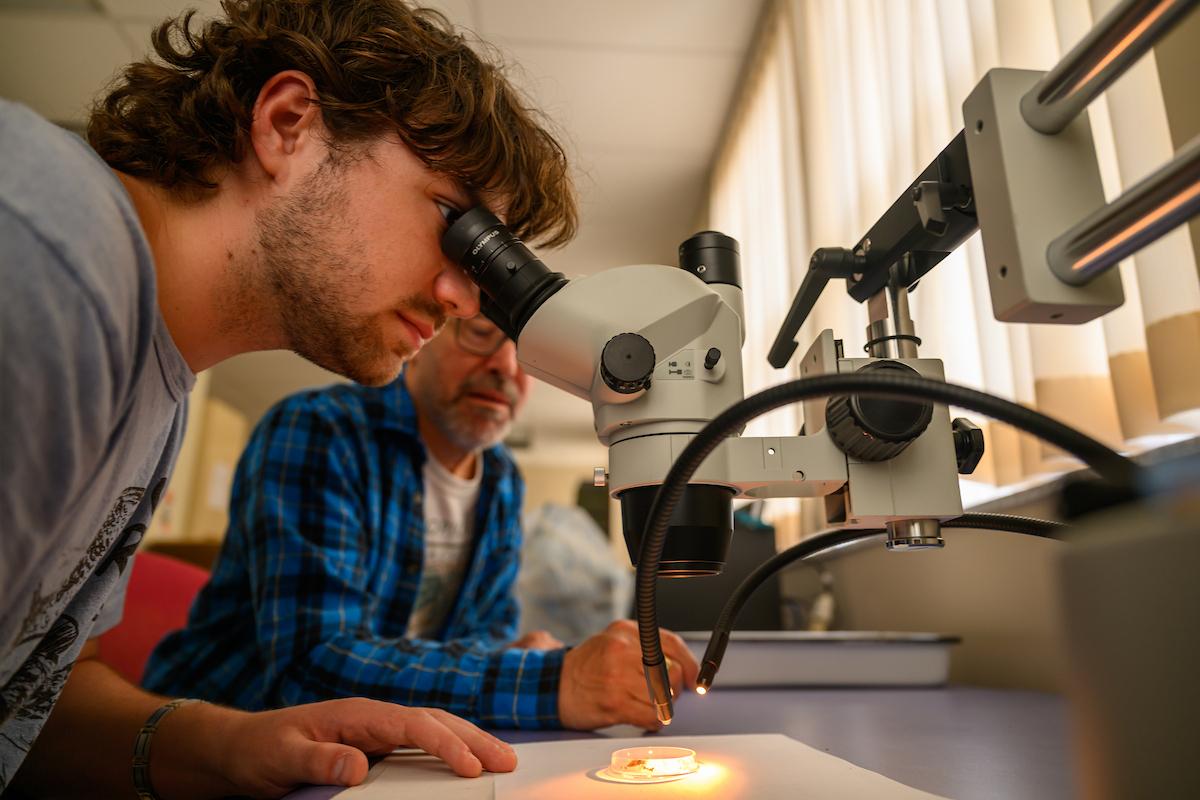OHIO is committed to your lifelong success through our Guarantee+, which offers fixed tuition and fees, a graduation plan and lifelong benefits to our students. We're continuously striving to make college more affordable and accessible, while maintaining the high quality and value of an OHIO education.
Biological Sciences Major
The Honors Tutorial College program in biological sciences offers exceptional students the opportunity to study aspects of biology in one-on-one interactions with Biological Sciences and Biomedical Sciences faculty members. Students are encouraged to engage in tutorials and coursework that will support their academic and professional goals and, if applicable, fulfill admission requirements for graduate or professional school (medicine, dentistry, veterinary medicine, physical therapy, etc.).
Curriculum
Students are required to complete six tutorials on topics related to biological and biomedical sciences in their first three years. These tutorials support in-depth study and research in biological sciences topics under direct faculty mentorship.
A typical tutorial will meet on a weekly basis for a minimum of one hour and may be combined with lab and/or field work. The student and the tutor will discuss seminal as well as current publications, discuss problems and solutions, debate, and offer critical analysis. The tutor continuously evaluates the progress of the student.
Students must also complete a high-quality, advisor-approved thesis that reflects original research and analysis in the field.
View Full Curriculum in the Academic Catalog
Admissions Requirements
This is a selective admission program. Students must demonstrate:
- Exceptional academic performance and aptitude for science-based curriculum
- Strong potential and motivation for independent study and research
- Submission of additional essays and high school teacher recommendations
- An interview with the director of studies
First-year, transfer, and external applicants are held to the same high standards. More details can be found on the HTC Application Page.
-
Financial Aid & Scholarships
All first-year Honors Tutorial College students admitted for fall semester earn the OHIO Premier Scholarship, valued at full in-state tuition and renewable for four years. Out-of-state HTC students may also earn the OHIO Trustee Award, valued at up to $7,000 annually.
Our Office of Student Financial Aid and Scholarships also provides services to students and parents both in-person and remotely
Career Opportunities
Students who complete a program in Biological Sciences will be prepared for a wide range of careers, including, but not limited to, work in the state and federal government, higher education settings, the health industry, research laboratories, environmental organizations, Centers for Disease Control and Prevention, nature centers, museums, etc. This track is particularly well-suited for students who plan to enter a biological sciences graduate program or professional school.

